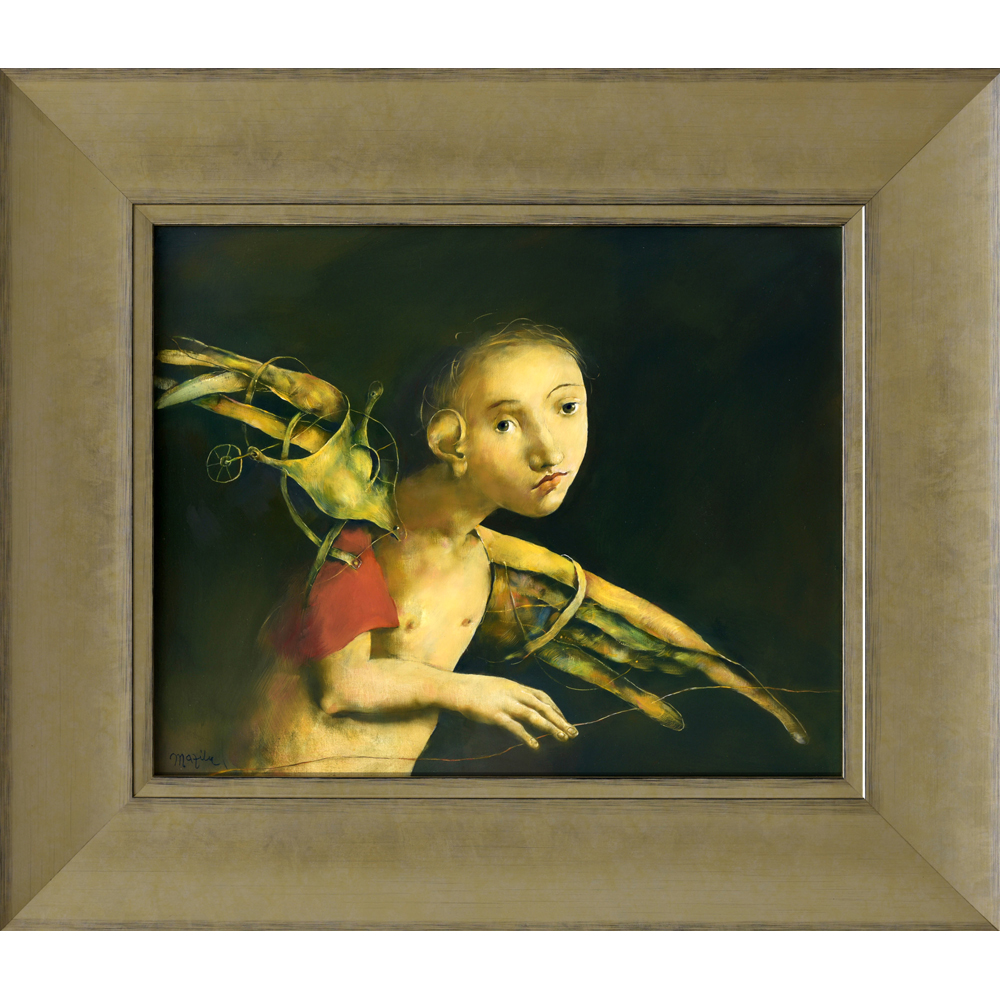Artwork Description
Georges Mazilu – L’ange furtif
Dimensions: 26 x 28″ framed / 17.5 x 19.5″ unframed
Year:
Medium: acrylic on canvas
In L’ange furtif, Mazilu portrays a character embodying the work’s title; furtive, meaning to avoid attention accurately describes Mazilu’s unsuspecting angel, who returns the audience’s gaze with a look of apathy. Rather than the feather and splendor of traditional angel wings, Mazilu’s character displays more modest appendages constructed of found objects and temporal flotsam and jetsam.
While Georges Mazilu’s oeuvre often focuses on the human form—despite his characters’ unusual proportions and physical compositions—his works begin as loose abstractions that gain recognizability through process. Mazilu describes his paintings as mapping the transition from unconscious to conscious processing and often navigate the tension between his ‘will’ and ‘possibilities’. Mazilu was born in Romania and quickly developed an affinity for producing art, eventually pursuing formal training at the prestigious Grigorescu Institute of Fine Arts. After following what might be considered a classical education, Mazilu’s work began to develop a contemporary edge as it encountered the swell of modern art. Mazilu’s works often combine realism with the absurd and touch on the styles of canonical surrealist artists like Hieronymus Bosch or Salvador Dali. Mazilu’s paintings employ muted color palettes and simple backgrounds, drawing viewers’ attention to his carefully rendered characters posing in formal portraiture style or displaying less-than-human behavior.
Georges Mazilu is a contemporary Romanian artist whose works are included in museum collections throughout the world. Museums such as the Museum of Contemporary Art in Sofia, Bulgaria; Denver Art Museum; Tasmanian Museum; and the Fine Arts Museums of San Francisco hold his works in their permanent collections. Georges Mazilu escaped Romania in 1982. His works feature elements of photorealistic figuration as well as abstracted patterning as learned from Mazilu’s family trade as tailors. Mazilu is regarded one of the top international artists to emerge from post-Ceausescu regime Romania.
by Keira Seidenberg, Art History/Gender Studies student, McGill University

